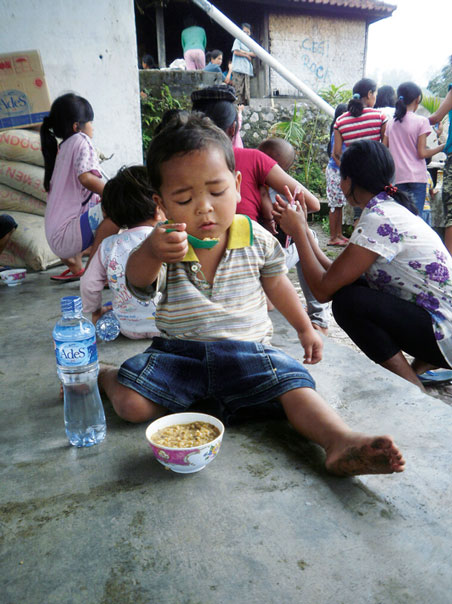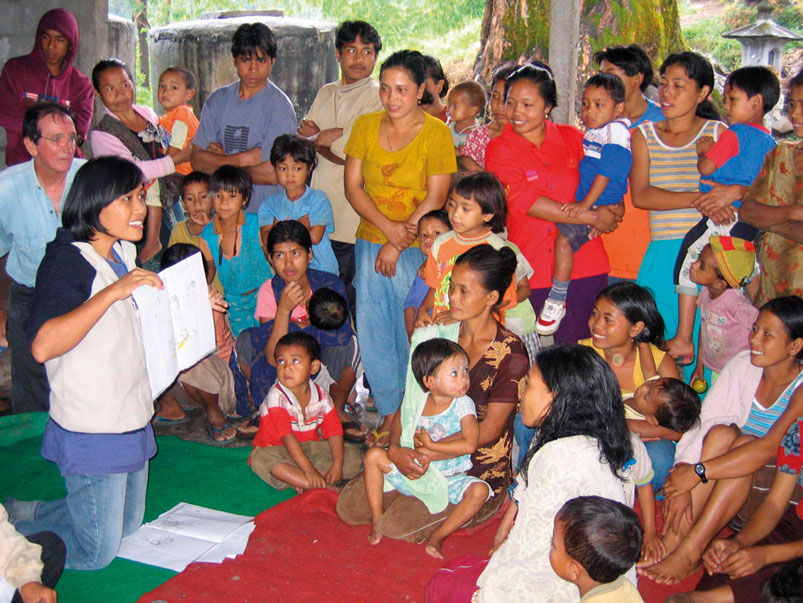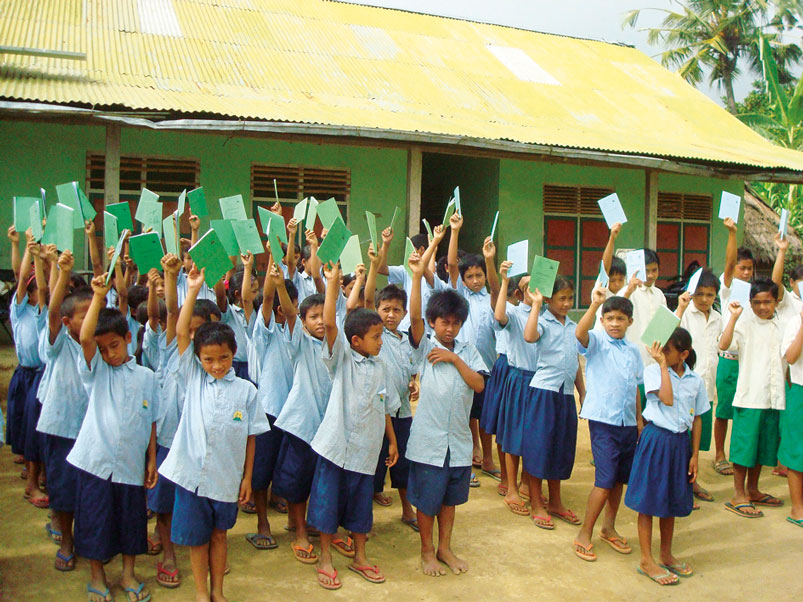This month, NOW! Bali speaks to David Booth, founder of East Bali Poverty Project, to hear his story and learn more about the works of this fantastic foundation.
David was born into a poor family in England. At school, he worked hard and kept on thinking how he could make his life better. With his passion for fixing things and his excellent school grades, David received an opportunity to study civil engineering. With this learned expertise, he joined a big construction company in London, which took him all around the world. Yet, none of these were anywhere he could call home, until, in 1988 he landed on Indonesian shores.
I stepped into David’s office; the yellow-painted walls were busy with maps, papers and books. I approached his desk- it was difficult to tell whether the interview had already started or not because as soon as I sat down he quickly began talking about the East Bali Poverty Project! I had an inspiring discussion with David; I could really see his passion.
David, in 1998 you established the East Bali Poverty Project. How did it all begin?
In 1988 I visited Bali, I rented a Suzuki Jimmy and went exploring the east coast. I fell in love with the serenity of the area and the people. It was at this point I could call Indonesia my home. So, I got a diploma to teach English, and worked as an English teacher in Jakarta. Still, however, I kept imagining remote places with no roads, no access to health and education… Thus began my search for the poorest area in Bali; I wanted to help. I visited Muntigunung and spoke to some warung (local kiosk) owners in a village, but they were not so poor. I continued my search and found Ibu Sulistrowati, a lecturer in Udayana University. She was making a list of the poor villages in Bali and Desa Ban (Ban Village) was on the list. Strangely, no one actually knew of its whereabouts or existence.
So, in March 1998 I finally went looking for this ‘lost’ village, asking people where I could find it. A villager I met said to me, “I know where it is, but you don’t want to go there – there isn’t even a road!” So, we drove from Tianyar for 5km until there were no more roads to follow…
What were the conditions in Ban like when you first arrived?
Desa Ban was not on any map, anywhere. It sits isolated in the saddle point between Mt.Agung and Mt. Abang. The people could only plant cassava and corn as that is all that can grow in the dry, sandy land. Their only water source required a 2-hour walk. There was no education and they were clueless about hygiene. Shockingly, 44,5% of the population suffered from goitre, a condition caused by malnutrition (iodine deficiency) causing the thyroid to swell up.
So, what strategies did you employ to ensure your program would work?
In the very beginning when I found the village, with the help of Ketut, Komang and Tri, the first move was making a survey. We interviewed each family in the village, asking them about their life: 1) ‘ How is life?’ 2) ‘What is the most important thing you need?’ 3) ‘If you can choose one problem that we can help with, so you can have a better future, what is it?’ They answered, “Education for the children, so that one day we can all have a better life”. So, the idea behind each program is help the people help themselves. Every program we’ve done has been their choice. I’ve never told them what to do- it simply is not my right.
So, since 1999, how has life changed in Desa Ban?
Our first program started in August 1999, an integrated education program for illiterate children in the Bunga hamlet. In 2000 we launched the first road access between Mount Agung and Mount Abang. Now over 3,500 families have 25km of improved dirt-road access stabilized with vetiver grass, linking 19 isolated hamlets to the outside world.
There are now six learning and development centres, with 100% community participation, and owned by those communities. 241 have graduated primary school, 113 children graduated junior high school and 45 children graduated senior high school. Micronutrient supplements have been provided for all children and mothers since 2001. Now they have 48 posyandu (monthly community health posts) in Desa Ban and Tianyar.
We developed safe water supplies from 3 springs, 3 artesian wells and developed appropriate rainwater collection reservoirs for 850 families. EBPP school children and over 500 families in 6 hamlets can now grow a wide range of organic vegetables and herbs. There is also ‘Bamboo Field School’, where the high school graduates and local farmers learn every aspect of growing, maintaining, harvesting, treating and managing bamboo. Solar Power Electricity is installed in six schools, bamboo centre, eight of the most isolated posyandu and solar pumping in artesian wells.
It is clear that through the work of the East Bali Poverty Project, the communities that were once left to dwell in the dark have been given a chance to shine. From healthcare to education, from farming to sustainable technologies, these peoples’ lives are rapidly improving. If you think you can help by volunteering, fundraising or donating, or to find out more information visit their website at www.eastbalipovertyproject.org









